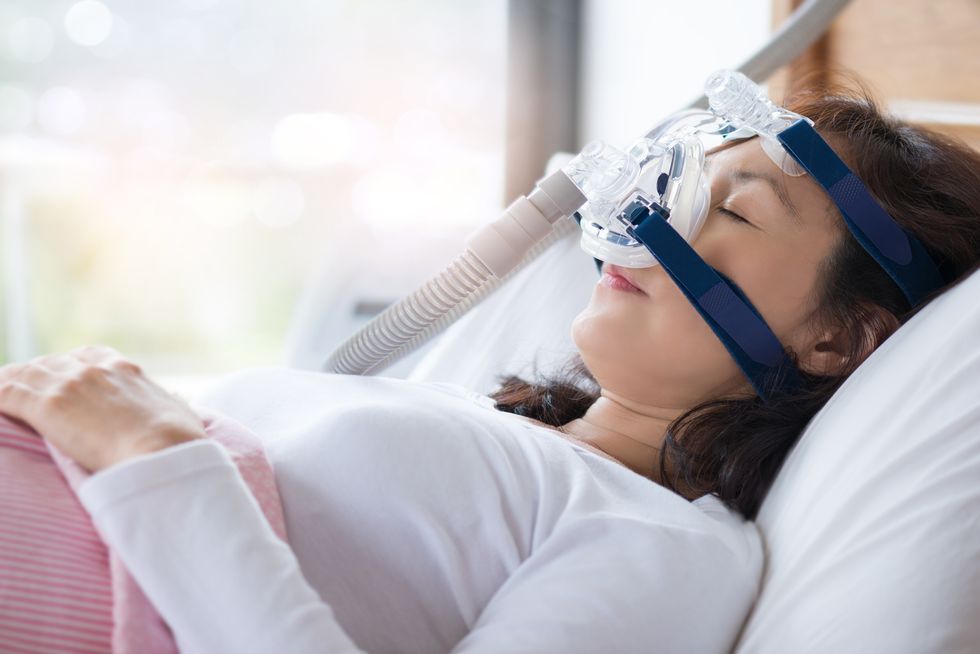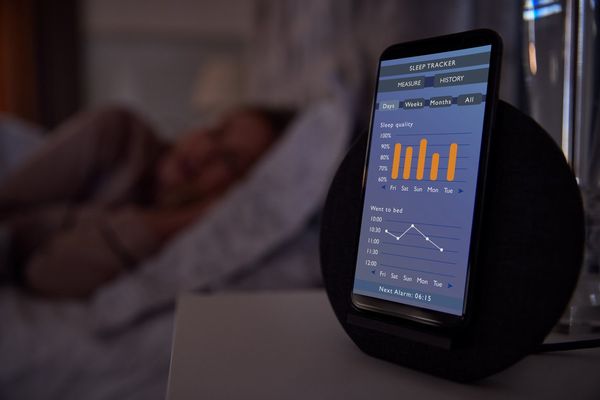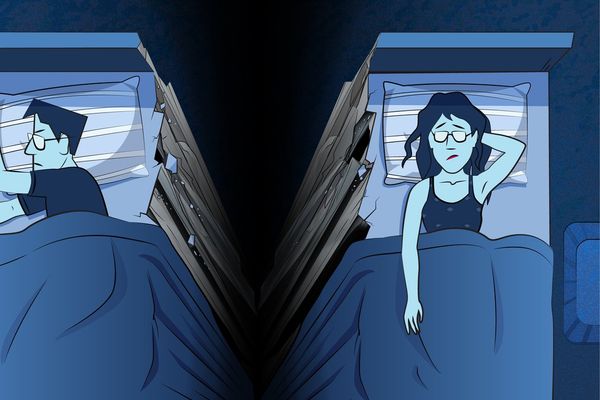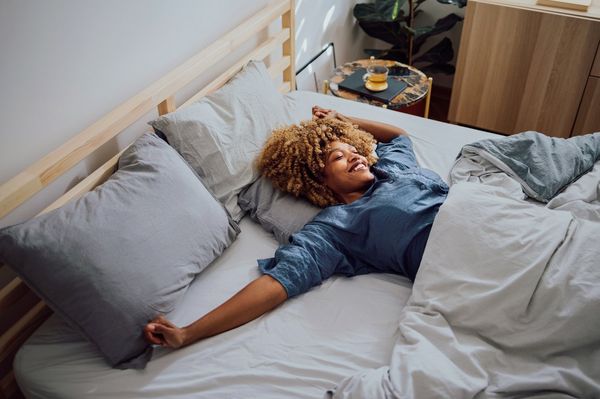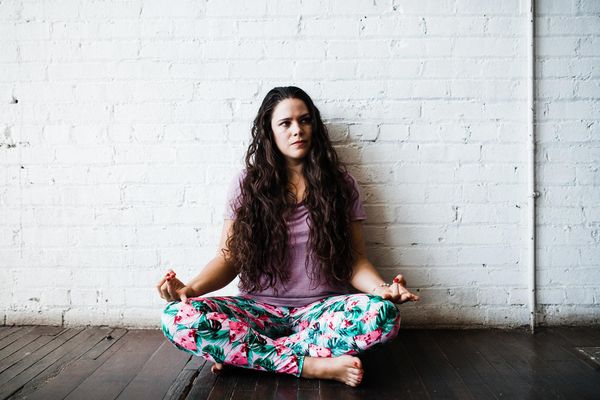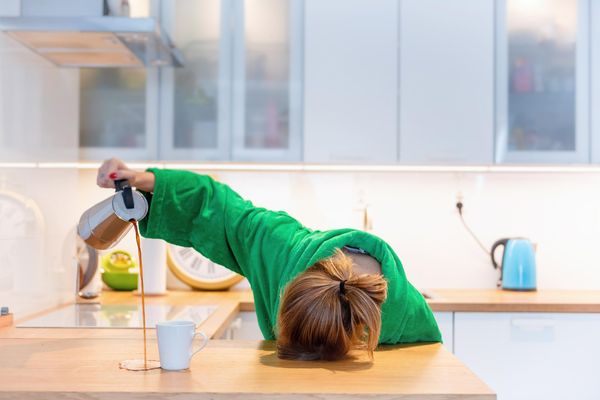Continuous positive airway pressure, or CPAP, therapy is a common treatment for obstructive sleep apnea, a potentially serious sleep disorder that causes breathing to stop and start repeatedly during sleep. A CPAP machine uses a hose and mask or nosepiece to give constant and steady air pressure and reduce the times you stop breathing while sleeping.
"Many people have been made healthier and happier by getting their sleep apnea treated with CPAP," says Terry Cralle, RN, a registered nurse and certified sleep educator who is certified in clinical sleep health. She is coauthor of Sleeping Your Way to the Top, Snoozby and The Great Big Bedtime Battle. "CPAP can help you get the quantity and quality sleep your mind and body need."
Learn more about sleep apnea and other common sleep disorders.
It can take time to get used to a CPAP mask. "Some people adjust to CPAP immediately, while others can take time getting used to CPAP," Cralle says. Stick with it though. Your treatment can take patience to be successful. Your doctor and CPAP supplier can work with you to help troubleshoot any problems. "Things will get easier until CPAP becomes a normal and healthy part of your daily routine," says Cralle.
Here are some things to know if you wear a CPAP mask.
Get the right mask.
Masks come in a variety of sizes, shapes and styles. Since we all have different face shapes, what works for you may not work for someone else. "Ensure that it has a good fit without any leakage of air that can go into your eyes or not allow for optimal treatment," says Darryl Appleton, MD, who is board certified in sleep medicine and medical director of the Appleton Clinic in Boca Raton, Florida, and Toronto.
Some machines have full face masks that cover both your mouth and nose. These are a good choice for people who breathe through their mouths. Nasal pillows rest at the entrance of your nostrils beneath the nose. That style may work well if you wear glasses because they don't block your eyes as much as a full face mask. Nasal masks cover the nose and are smaller and lighter than full face styles, Cralle says.
Try various types to see what is most comfortable; a properly fitting mask shouldn't be painful. (Just because you're a certain size in one mask doesn't mean you're the same size in another.)
"Don't rush the CPAP mask selection process," says Cralle. "Figure out which one is right for you."
Feel comfortable wearing the device.
Wear it for short periods while you're awake, such as when you're watching TV or reading. Once you've adjusted to wearing it, use it whenever you sleep, even during naps. The more you wear it, the more you'll get used to it.
"Inconsistent use of CPAP makes it more difficult to get used to and compromises the therapy's health benefits," says Cralle. You can also take advantage of pillows made specifically for CPAP wearers, says Cralle. "They typically have a different shape that can accommodate your CPAP mask and tubing, which is especially helpful for side sleepers," she says.
Don't suffer from a stuffy or dry nose.
A mask that is leaky can dry out your nose or even your eyes. (And a leaky mask means you're not getting the full air pressure you need.) You may need to try one with a heated humidifier or use a nasal saline spray at bedtime. Or you may be better suited with another style such as a nasal pillow. "Just don't use an over-the-counter nasal decongestant too much," says Dr. Appleton. "That can lead to dependence and actually make your nose stuffier at night." Talk to your health care professional if this is an issue.
Your machine shouldn't be noisy.
Most new models are nearly silent. If the device's noise bothers you, ensure that the air filter is unblocked and cleaned. "Air filters should be changed monthly or per the manufacturer's instructions to help keep your CPAP machine working smoothly," says Cralle. Your doctor or supplier can check the device to make sure it's working optimally. If the noise still is troublesome, mask the sound by wearing earplugs or using a white noise sound machine.
Avoid having a dry mouth.
If you breathe through your mouth at night or sleep with your mouth open, some devices can worsen dry mouth. If you wear a nasal mask, a chin strap can help keep your mouth closed and decrease air leakage. You can also try a full face mask style device; that will cover your mouth and nose. Or, try a CPAP-heated humidifier that attaches to the air pressure machine. "Some over-the-counter medicines can be helpful as well for dry mouth," Dr. Appleton says.
You may have difficulty breathing at first.
That may be due to the novelty of the experience or pressure problems. High pressures may be uncomfortable at first; low ones may make you feel like you're starving for air. Don't be scared if this happens. "Often, your provider or specialist can help you get used to the pressure slowly over time," Dr. Appleton says. "Or, you can use an automatic CPAP machine that changes the pressure based on your needs during the night." He says that most people get comfortable with their CPAP machines over one or two weeks as long as they keep at it.
Clean it.
"It's important to keep all components of the CPAP therapy clean to prevent mold and bacteria growth," says Cralle. You'll get specific cleaning/maintenance instructions from the company that delivers your equipment. Machines are also available that clean and disinfect the device, Dr. Appleton says.

